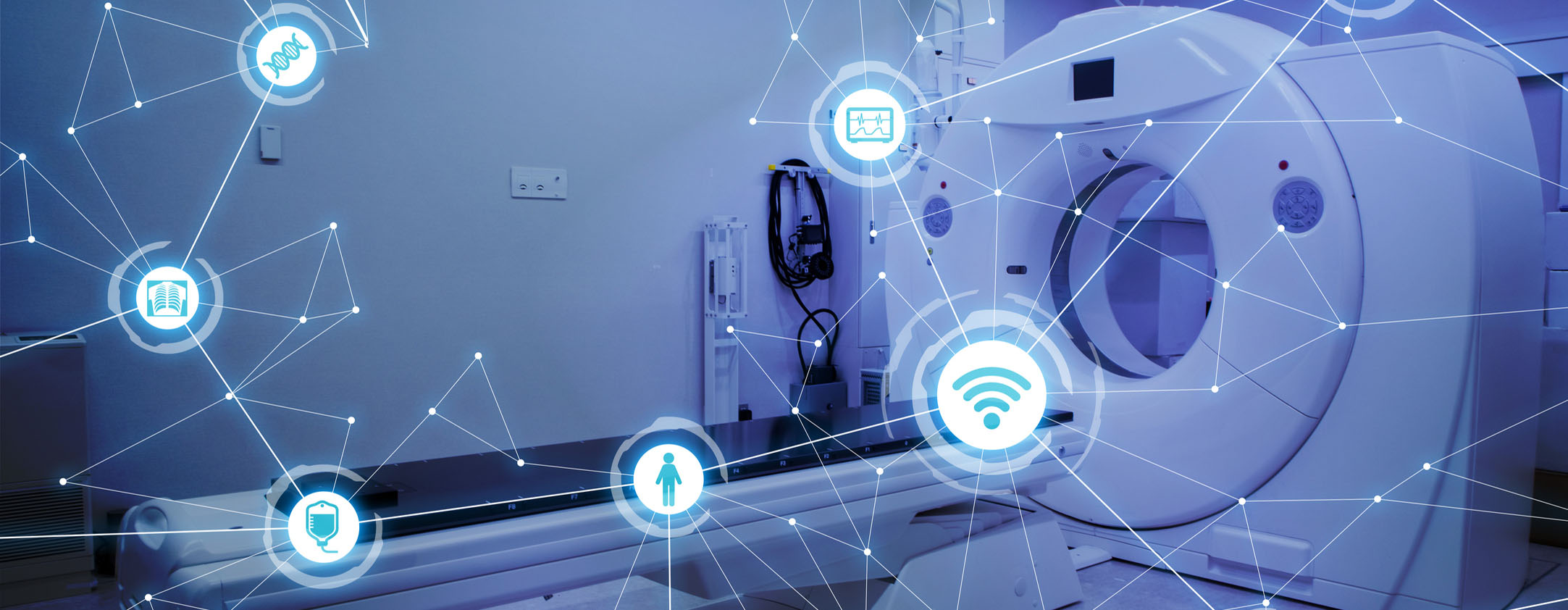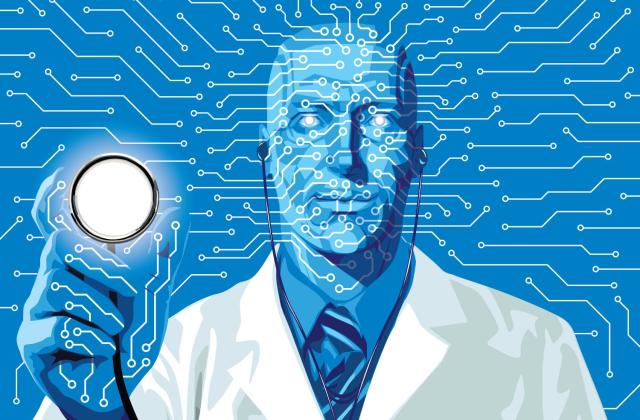Source – techstory.in
Healthcare has always been a difficult industry to tap into. Every day, new devices and procedures are launched but are not adapted readily because patients may be at risks. Yet, in the past one decade, a major player has entered the healthcare industry – artificial intelligence.
While this is not a singular product, or service, or a startup, it is still a development sought by many. Artificial intelligence brings to the fore solutions for many discrepancies that are currently present in the healthcare industry.
Here are 7 ways in which AI will impact healthcare:
Wearable Health Measures
Almost all consumers today have the access to a FitBit or a Smartwatch or some kinds of electric trackers. While most of these wearables are used to get connected to your smartphone or check your fitness activity, they can also help one track their daily health.
With in-built measurement qualities like a pedometer, heart-rate tracker, and sleep tracker, these wearables can generate 24 by 7 worth of data related to your well being and health. The collection of this round-the-clock data and then its addition as a complement to one’s regular doctor visits can change as to how diagnoses are perceived.
While this data is still being collected by the wearables, artificial intelligence can determine what to make of this data. It will play a significant role in interpreting data inputs and then in effectively communicating with patients and the doctor.
Providing Multiple Data Points and Solutions for Research
While there are tons of data available in the field of medicine, it is very difficult for doctors to go through them, interpret them, and then make a viable diagnosis. Artificial intelligence can take over. AI with its faster computing skills can look at and correlate multiple data points and complex sets of data which will, in turn, help doctors interpret information quickly and more efficiently.
For example, a lot of cancer research depends on the study of immunotherapy. And one of the best ways to get ahead in the field of immunotherapy is to get multiple points of data in large numbers. Cancer therapies are relatively new and collecting data helps doctors determine what drug tests are working on a more populous level.

As discussed before, one of the main functions of artificial intelligence is to collect data for every passing moment. So, soon the growth of data will be exponential and there will be multiple data points of a patient that health experts can work with.
If programmed well, these data points can be interpreted by AI to detect high-risk scenarios or life-threatening stages in a patient. Once a patient is detected to be at a high risk of contracting a certain disease or developing symptoms, AI can help doctors to get on preventive rather than curative measures.
Illnesses like diabetes, heart attacks, seizures, and Alzheimer’s are preventable if a patient is detected during the high-risk stage. Artificial intelligence helps exactly with this.
Clinical Solutions:
Artificial intelligence will make a huge impact in the healthcare workspaces. The healthcare industry is generally known to be extremely labor-intensive, in which the end consequence is the lack of quality patient care.
AI will help streamline this. Clinical optimization means that net patient outreach is improved, there is more remote engagement with patients, and easy recording of patients’ healthcare and diseases.
There are healthcare technology solutions (such as Interpreta) that work on AI prove beneficial both for healthcare centers and consumers by creating prioritization software. This software is where high-risk patients and their appointments are prioritized accordingly. This is just on the lens through which clinical optimization and artificial intelligence can be looked at.

Doctors more often than not work on human instincts rather than textbook teachings. Decisions like how long should a patient be resuscitated for, are there any chances for improvement in the long-term scenario, how long will a patient take to recover, are all claims based on instincts and experience.
AI will help take this a step further and remove the guesswork out of patient care. By using previous data points, AI can be successful in predicting the future course of action for patients with more surety.
“…if you have an AI algorithm and lots and lots of data from many patients, it’s easier to match up what you’re seeing to long-term patterns and maybe detect subtle improvements that would impact your decisions around care.”, says Brandon Westover, MD, Ph.D., Director of the MGH Clinical Data Animation Center.
Precise Analytics for Pathological Images and Reports
The main function of pathological labs is to know what is wrong (or not working) with patients using minimally invasive procedures. Procedures like sonography, MRI scans, CT scans, blood tests, and urine tests are all examples of pathological tests. Conducting these tests is just the first part. Analyzing and implementing a solution according to the test results is another.
A lot of the times, the data in these scans and reports can be misread due to human error and can result in the wrong medication or implementation.
Artificial intelligence and analytics can look at these scans and break them down to the pixel by pixel. This software can identify objects, dimensions, depths, and sizes that can otherwise be misinterpreted by the human eye.
The software can also help in efficiency and productivity by identifying features of interest in these scans. This is to prevent an unneeded wastage of time in areas that are not of particular concern.
Artificial Intelligence in Medical Devices
/cdn.vox-cdn.com/uploads/chorus_image/image/60195103/HIMSS_OMB_image.0.png)
AI can not only be included in wearables and computer software but can be a part of all our day-to-day devices including the medical ones. These devices can be programmed with respect to each patient and made intelligent as time progresses.
Some healthcare devices that can be made smarter by incorporating AI are heart rate monitors, IV’s, ICU monitors, etc. These devices can be programmed to regularly dispense liquids into patients systems, trigger alarms when abnormalities are detected, and also to understand external tamperings such as mistaken overdoses and abnormal drug measurements.
“When we’re talking about integrating disparate data from across the healthcare system, integrating it, and generating an alert that would alert an ICU doctor to intervene early on – the aggregation of that data is not something that a human can do very well,” said Mark Michalski, MD, Executive Director of the MGH & BWH Center for Clinical Data Science.
